
PUMPA - SMART LEARNING
எங்கள் ஆசிரியர்களுடன் 1-ஆன்-1 ஆலோசனை நேரத்தைப் பெறுங்கள். டாப்பர் ஆவதற்கு நாங்கள் பயிற்சி அளிப்போம்
Book Free DemoIn the chain of transmission of the infectious agents, we have already studied the point of entry.
Point of entry is how pathogen passes into the host from the external environment. There are different means of entry, such as water, air, food, physical contact, sexual contact and infected animals. Based on this, diseases are classified into
- Airborne disease
- Waterborne disease
- Vector-borne disease
- Sexually transmitted disease
Airborne disease:
Human beings inhale atmospheric air. Due to continuous inhalation of contaminated air, the chances of airborne microorganisms finding a host and causing the infection is higher. Most respiratory tract infections are acquired by inhaling the pathogen transmitted through droplets caused by cough or sneeze, dust, and spores. Bacteria and viruses cause airborne diseases.
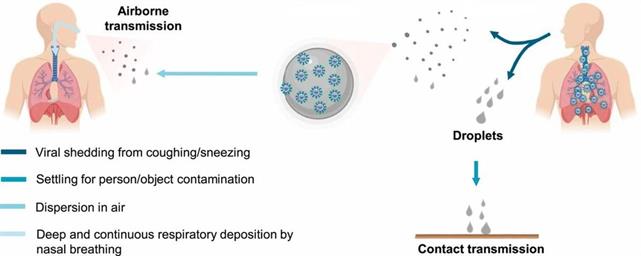
Mode of airborne diseases
A few airborne diseases and their modes of transmission are explained below.
Airborne diseases caused by bacteria:
Tuberculosis (TB):
It is an infectious and contagious disease.
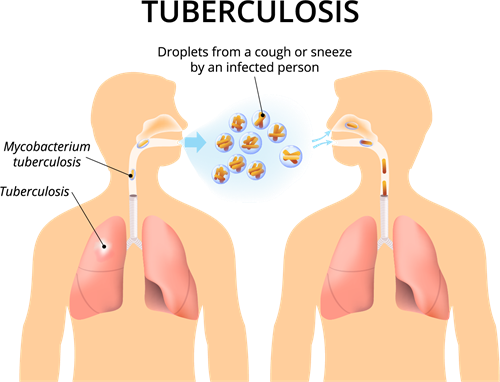
Tuberculosis
Causative organism: Mycobacterium tuberculosis.
Organs affected: Lungs
Mode of transmission: Airborne droplet from the sputum of infected persons.
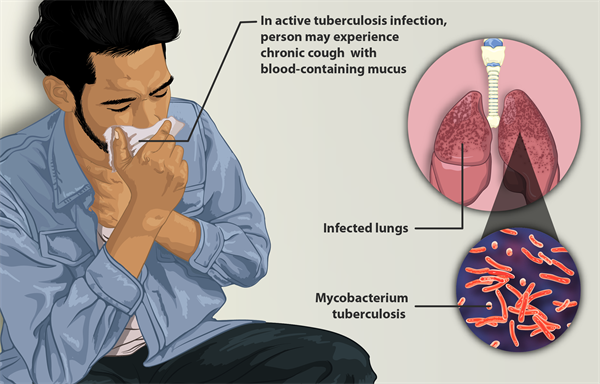
A person is suffering from \(TB\) and presence of Mycobacterium tuberculosis inside his lungs
Symptoms:
- Persistent cough
- Loss of appetite
- Weight loss
- Fever
- Night sweats
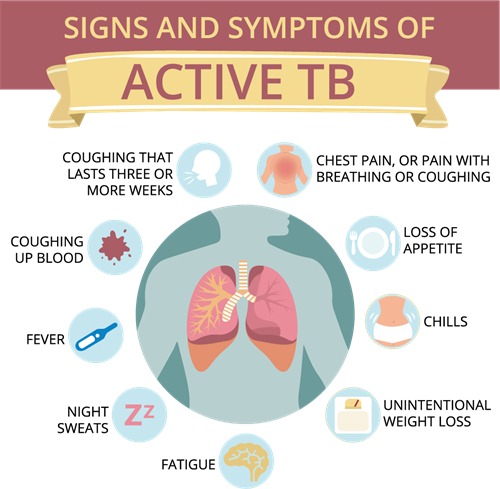
Sign and symptoms of tuberculosis
Treatment: Infected person has to be treated with anti-tuberculosis drugs for 6 months to one year.
Diphtheria:
Causative organism: Corynebacterium diphtheriae.
Organs affected: Upper respiratory tract (nose and throat).
Organs affected: Upper respiratory tract (nose and throat).
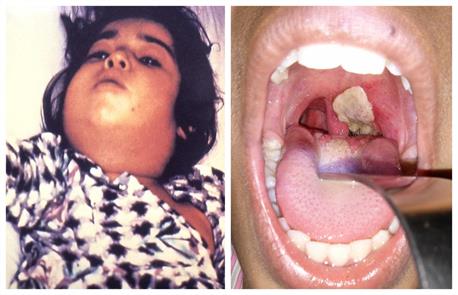
The infection of Diphtheria inside a person's throat
Mode of transmission: Droplet infection and droplet nuclei
Symptoms:
- Fever
- Sore throat
- Choking of the air passage
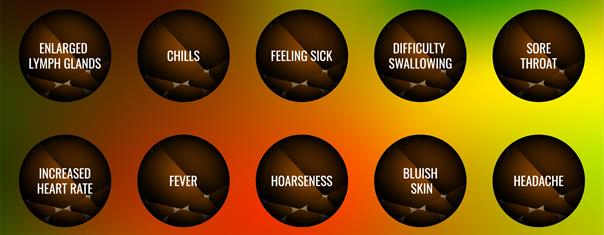
Symptoms of diphtheria
Treatment: Antibiotics such as penicillin orerythromycin are used to treat Diphtheria.
Whooping Cough (Pertussis):
Causative organism:Bordetella pertussis
Organs affected:Respiratory tract
Mode of transmission: Droplet infection, direct contact with infected person.
Symptoms:
- Mild fever
- Severe cough ending in a whoop.
Treatment: Azithromycin and erythromycin antibiotics are used for the treatment of whooping cough. Mycobacterium tuberculosis was discovered by Robert Koch.
- Mantoux test: A highly specific tuberculin skin test for detection of tuberculosis.
- National Tuberculosis Control Programme started in 1962.
- DTaP vaccine can prevent Diphtheria, Tetanus, and Pertussis.
Important!
Reference:
https://commons.wikimedia.org/wiki/File:Https-doi.org-10.1073-pnas.2009637117-F4.large.jpg
https://commons.wikimedia.org/wiki/File:Dirty_white_pseudomembrane_classically_seen_in_diphtheria_2013-07-06_11-07.jpg
https://en.wikipedia.org/wiki/Diphtheria